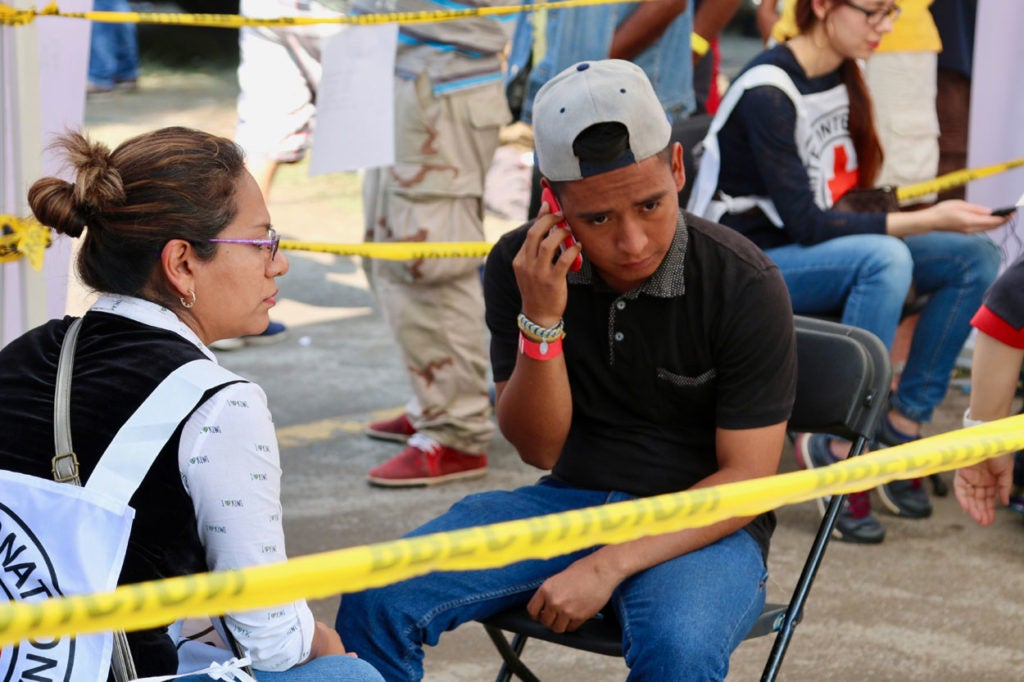‘It’s Your Right to Go to the US’: What I Saw When I Visited the Migrant Caravan
Nolan Peterson /
MEXICO CITY—The migrant caravan has its own de facto government, and on this night the travelers from Central America gathered at the behest of a few leaders to discuss issues of the day as well as the big picture—such as what route to take to the U.S. border.
“It’s your right to go to the U.S.,” Milton Benitez, a political analyst and sociologist who hosts the Honduran TV show “El Perro Amarillo,” implored the impassioned crowd.
In a scene not unlike when a coach rallies his players before a big game, the Honduran media figure pressed the encircling migrants on the night of Nov. 7 not to give up on their “mission” to achieve the U.S. border.
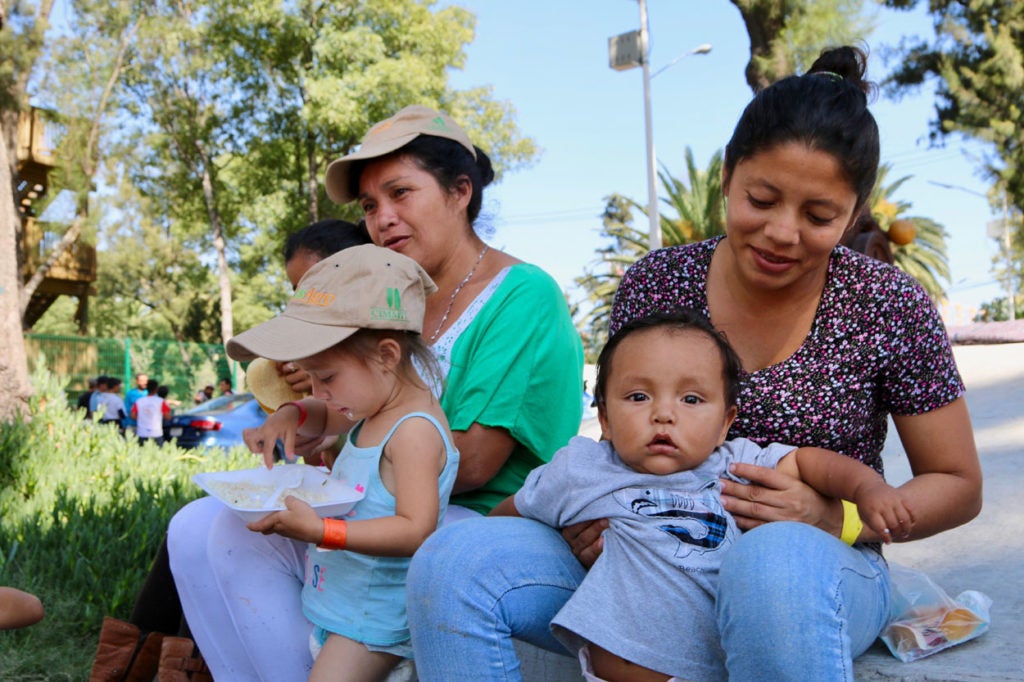
Darly Maria Galeas Amaya, right, a 27-year-old migrant from Comayagua, Honduras, is traveling with her husband and 9-month-old son. (Photos: Nolan Peterson/The Daily Signal)
The large group ensconced last week in Mexico’s capital was the foremost and largest of five migrant caravans traversing the nation and headed north. Altogether, they comprise roughly 12,000 people, mainly from the three Central American countries of El Salvador, Guatemala, and Honduras.
Gabriella, a 20-year-old woman from Honduras, sat on a steel blue sleeping pad with her 11-month-old daughter Ayesha cradled in her arms. Mother and child were encamped on the grounds outside the Jesús Martínez Palillo soccer stadium along with roughly 4,500 other migrants.
“We’re here for lack of work,” said Gabriella, who asked that her last name not be published.
Like many others, she hasn’t taken up Mexico on its offer of asylum, choosing instead to keep heading northward to the U.S. border.
The five caravans highlight an unprecedented uptick in frequency and size from the normal flow of Central American migrants, experts say, potentially heralding a new era of larger, more frequent, and better organized caravans that could test U.S. immigration laws and strain the U.S.-Mexico relationship.
“It’s never been like this, it’s an unprecedented volume,” said Gustavo Mohar, a former undersecretary for migration, population, and religious affairs in Mexico’s Interior Ministry.
The migrants departed Mexico City on Saturday, heading for the border in Tijuana, opposite San Diego. Traveling on foot, the bulk of them likely would take several weeks to reach the U.S. border.
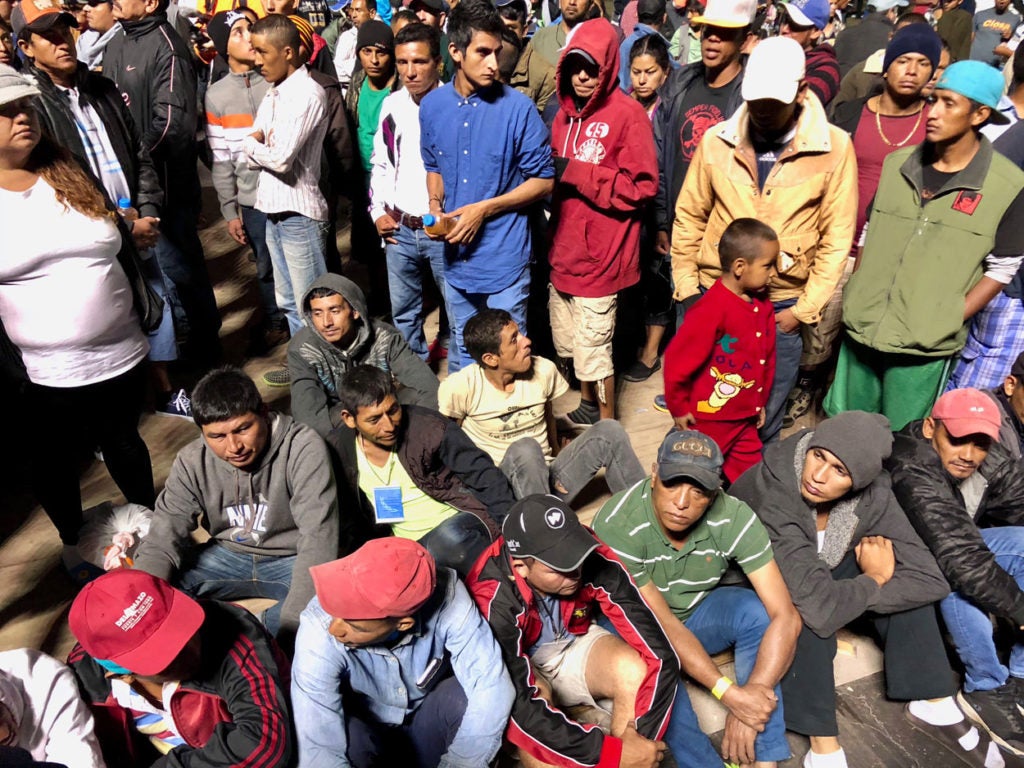
At a nighttime assembly Nov. 7, migrants listen to leaders who encourage them to press on northward to the U.S. border.
However, a group of about 400, reportedly bused ahead of the main caravan body, arrived Tuesday in Tijuana, regional news outlets reported, highlighting what some officials describe as an unprecedented degree of logistical organization and funding.
“These caravans are very well orchestrated,” said one Mexican official, who asked not to be named. “We’ve seen signals that there is money. The signals are different from the typical flow of migrants.”
About 7,000 U.S. military personnel have deployed to the southwest border with Mexico to harden defenses as the migrants approach.
Hidden Hand
Benitez, the Honduran television personality, is also a member of Pueblo Sin Fronteras, or People Without Borders, according to Mexican news reports.
People Without Borders is a Chicago-based nonprofit that has organized multiple migrant caravans aimed at the U.S. border. The nonprofit notably organized a caravan of Central American migrants in April known as the Migrants’ Way of the Cross.
People Without Borders, however, insisted the caravan encamped in Mexico City was a grassroots, spontaneous movement.
“Look, this started in Honduras as a united caravan. All of it,” said Oscar Noel Bonilla, a Honduran worker for the group who was organizing logistics. “There’s no director. No leader. Pueblo Sin Fronteras just provides the aid. They talk with immigration, federal officers.”
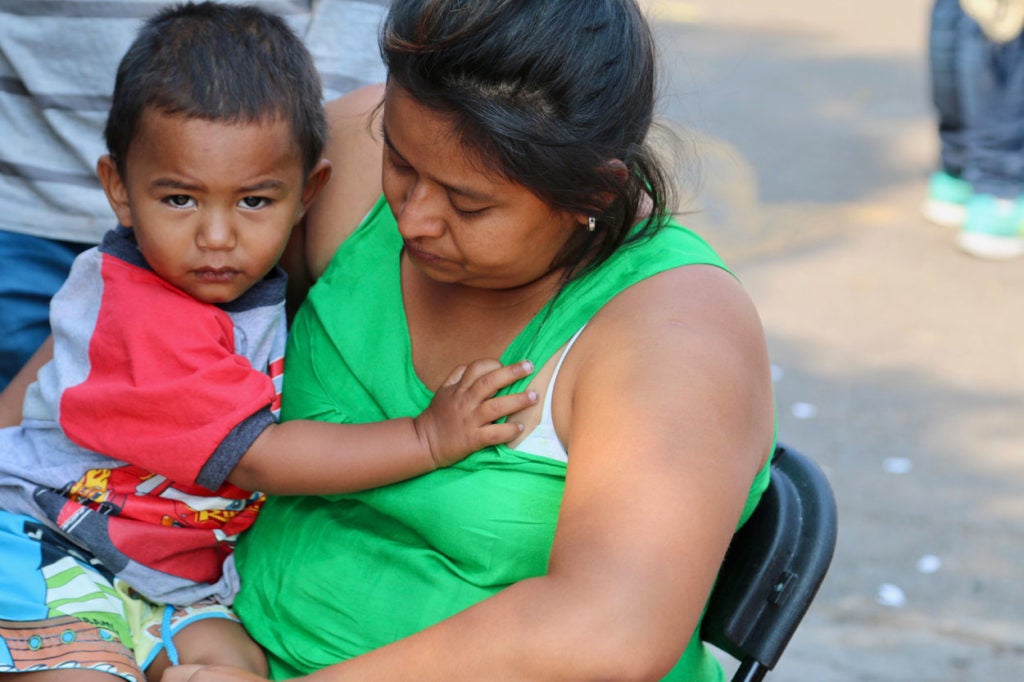
On their own, migrants face the threat of rape, robbery, kidnapping, and extortion by criminals, gangs, and drug cartels.
Nevertheless, the group’s influence was on full display during the raucous nighttime assembly Nov. 7. The nonprofit’s organizers urged migrants to press on and offered seminars to prepare them for questions at the U.S. border from officials charged with verifying asylum claims.
Still, despite their prolific presence and influence, organizers from People Without Borders said they were not in control of the caravan.
“No one’s controlling anybody here,” Bonilla said. “Everyone [is] looking out for everyone.”
Gina Garibo, a project coordinator for People Without Borders, told the crowd that the caravan wasn’t led by any particular organization.
“I know that a great many of you are excited to journey on,” she said. “Others, listen, others could also make a life for themselves in Mexico, and it’s fair for the government to listen to them.”
“No,” the crowd interrupted.
Rejecting Mexico’s Asylum Offer
“This is a different social phenomenon,” Mohar, the former Mexican official, said in an interview with The Daily Signal. “It’s an expression of desperation. In my view, it’s an expression of the absolute failed states of Honduras, Guatemala, and El Salvador.”
In late October, Mexican President Enrique Peña Nieto announced a plan to offer temporary work permits, medical care, and government ID cards to Central American migrants seeking asylum in Mexico.
Since that offer, about 3,500 migrants have split off from the first two caravans, opting to stay in Mexico, Mexican officials said. Of that number, many were women and children, officials said. So, as the caravans head north, the percentage of men increased.
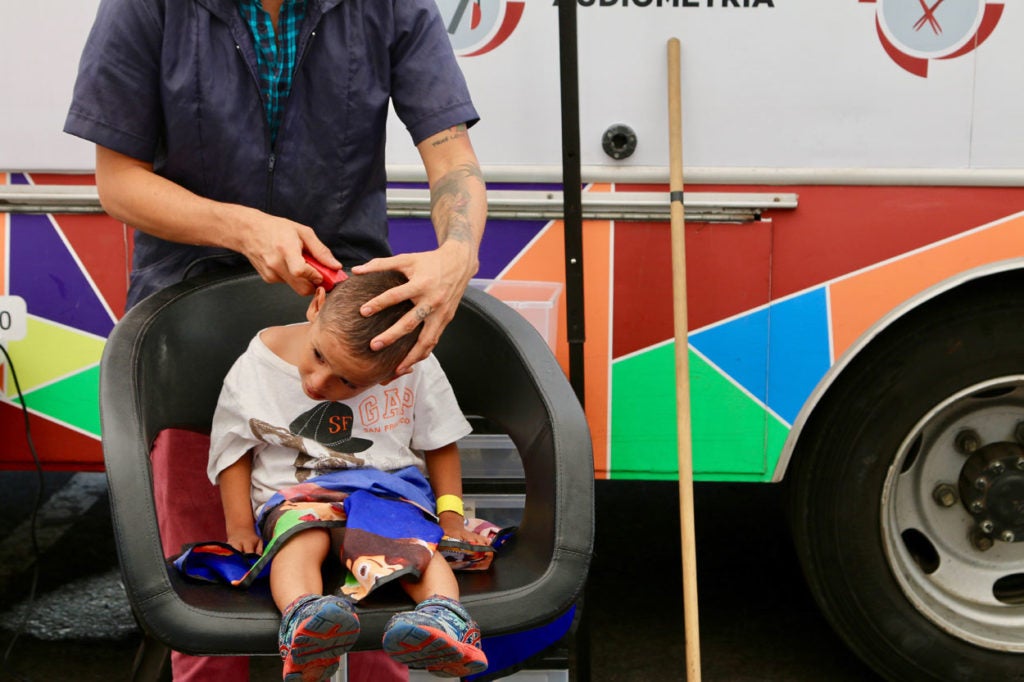
Volunteers provide the migrants in the U.S.-bound caravans with some basic services for free—including haircuts.
Of the 4,500 migrants encamped last week in Mexico City, U.S. and Mexican officials estimated, roughly 60 percent were men, 30 percent women, and 10 percent children.
The majority opted to spurn Mexico’s asylum offer and press on to the U.S.
“They’re not accepting our help,” the Mexican official said, adding that the offer was a “one-shot deal.”
If the migrants are not granted asylum status at the U.S border, under Mexican law they cannot be sent back to Mexico. They automatically must go back to their home country and cannot reclaim Mexico’s asylum offer.
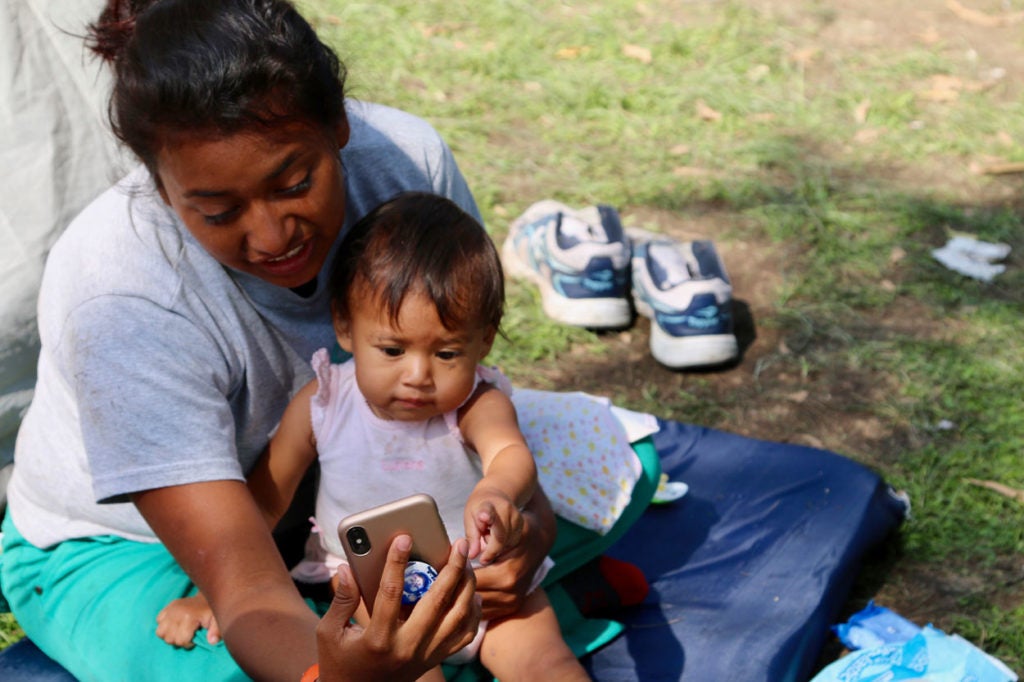
Asked why she is subjecting herself and her 11-month-old daughter to the arduous journey, Gabriella replies: “We’re here for lack of work.”
Gabriella said she heard only “rumors” of such an offer. She said she doesn’t believe it was true, and anyway her goal long has been to go to America.
Darly Maria Galeas Amaya, 27, from Comayagua, Honduras, echoed this line of thinking.
“My dream isn’t to stay in Mexico … my dream is to get to America to be able to, I imagine, to be able to give a better life to my children,” said Amaya, traveling with her husband and 9-month-old son.
“Yes, there’s the option to stay in Mexico, but the destination we’re heading for is the United States,” said Wilson Gomez Portillo, 23, traveling with his wife from Siguatepeque, Honduras. “They do offer us refuge here, but we don’t want to stay.”
“They say the [U.S.] border is guarded and they won’t let immigrants like us pass, but we have to show them from our hearts that we don’t have jobs or anything, right?” Portillo said. “And we’re simply coming to work. We’re not going to commit crimes or anything like that.”
An American immigration lawyer named Javier, who asked that his last name not be published, said the migrants are wary.
“They don’t trust anyone,” Javier said. “They’re very skeptical of what they hear from anyone other than organizers or their families. They think the Mexican refugee status offer was a trick, because the organizers told them so.”
‘We’re Fleeing’
“We’re going with a dream, with the goal of finding political asylum and refuge,” said Exell Escobar, 26, from Colon, Honduras, adding:
It depends on the United States’ justice, their judges. If they are really humanitarian, if they have a conscience, they can side with us. But we’re not planning to come in by force and create problems. We’re fleeing. We’re fleeing from misery, from unemployment, from the lack of opportunities.
Nancy Cruz, 29, traveling from La Paz, Honduras, said she hadn’t heard of Mexico’s asylum offer, but news of U.S. troops on the border concerned her.
“Imagine, we’ve been traveling for over a month, and we’ve still got a long way to go,” Cruz said. “And for them to tell us we can’t go in and all that once we get there would be an injustice.”
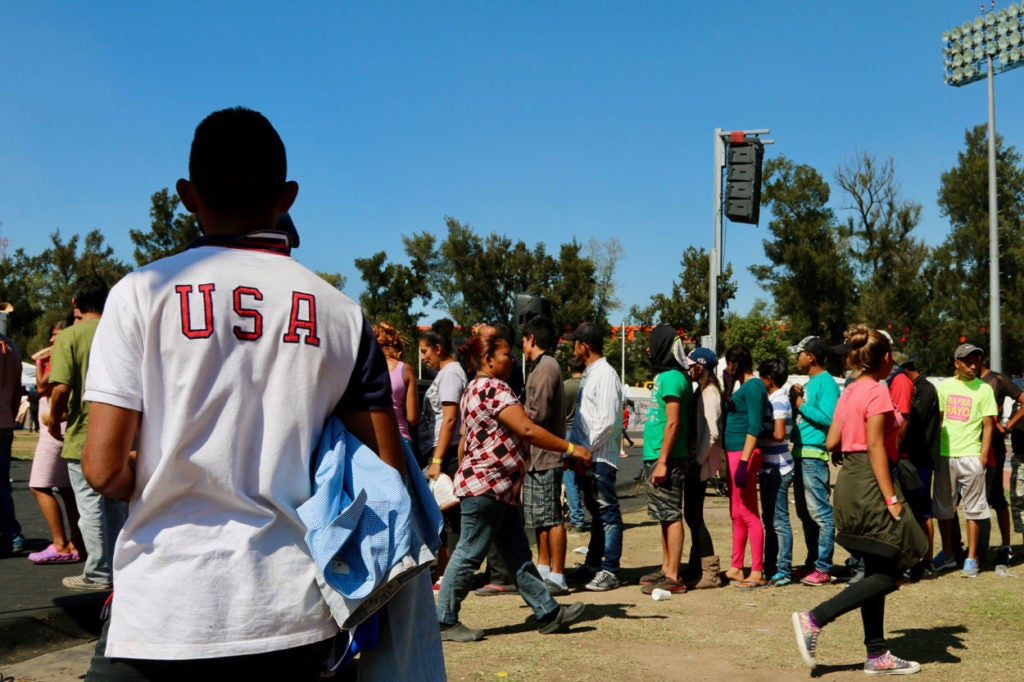
Despite an offer of asylum from Mexico, many Central American migrants are determined to reach the U.S. border.
A group of American immigration lawyers circulated in the encampment in Mexico City, easily identified by orange and white baseball hats that said in Spanish: “I Support Asylum in the U.S.”
Javier and the other American lawyers were there as part of People Without Borders’ effort to educate migrants about the U.S. asylum process. Some of the lawyers said they learned about the operation from group email lists.
David Inserra, a policy analyst for homeland security at The Heritage Foundation, traveled to Mexico City to observe the caravan firsthand.
“Based on the interviews I witnessed, most [migrants] do not have a valid asylum claim,” Inserra said. “Most talked about wanting a better life, a job, or perhaps [getting] away from societywide criminality.”
Information War
The U.S. government has used radio and social media to transmit information about the asylum process. For its part, the Mexican government’s communications efforts include deploying field teams to attempt to inform migrants, face to face, about the asylum offer.
Still, the information is not cutting through.
The reason for the failure, U.S. and Mexican officials say, is that their campaigns compete with disinformation from caravan organizers, as well as criminal elements such as smugglers and human traffickers. All have a vested interest in keeping the caravans northbound.
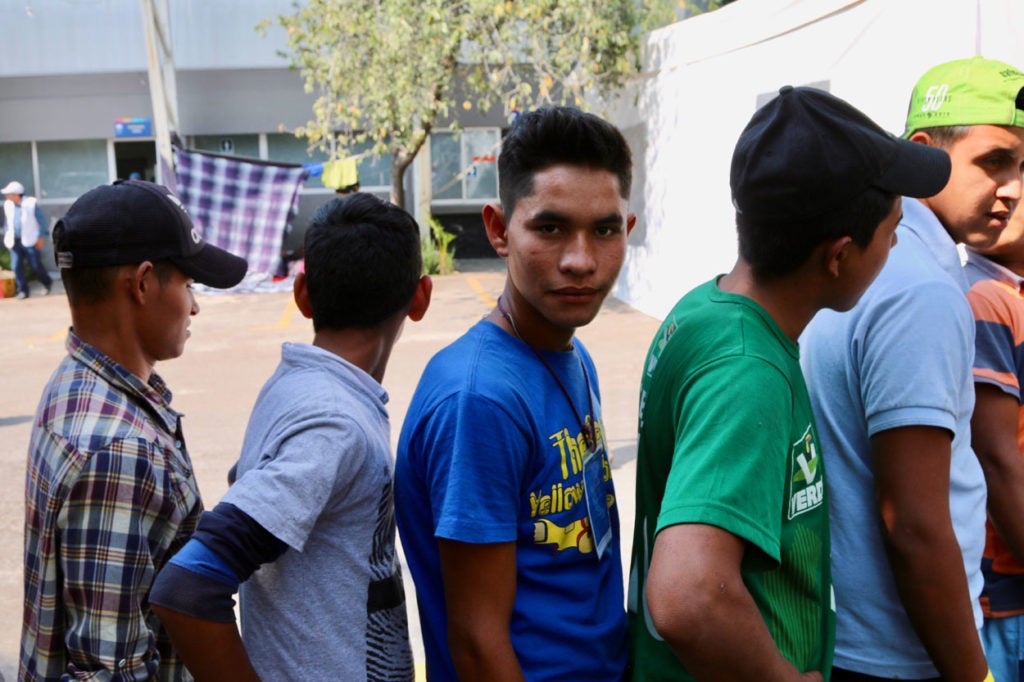
Migrants line up for lunch at the encampment at Mexico City’s Jesús Martínez Palillo soccer stadium.
The U.S. information campaign was “totally ineffective,” Mohar said.
Mexican officials told The Daily Signal that it was a “daily struggle” to counter the stream of disinformation.
“They are told that if they accept the Mexican asylum offer they can only stay temporarily and will have to go back,” the Mexican official said of the migrants.
The U.S. government’s goal is to dilute the strength of the caravans before they reach the border, while leaning on Mexico to harden its southern border with the troubled Central American nations.
The encampment in Mexico City was a rare moment in which the largest caravan had stopped and regrouped at a centralized location for an extended period.
Yet, surprisingly, U.S. government personnel were not deployed there to spread accurate information about the asylum process. It was a missed opportunity.
“While I always knew there was misinformation and a lack of U.S. ability to send an effective deterrence message, seeing the activists and organizers mislead these poor people was shocking,” Heritage’s Inserra said, adding:
Clearly they did little to promote and actually worked to counter alternative offers and solutions for these people, preferring to use these migrants as political pawns.
I think if the information campaigns by the U.S. and Mexican authorities are to be effective, they need a significantly larger presence to counter misinformation.
Even then, it’s not clear that the word of governments is trusted more than the word of their family already in the U.S., or the caravan organizers. With the loopholes in our laws resulting in catch and release, that reality is being transmitted back to desperate people via word of mouth.
That glimmer of hope is enough to encourage them to try.
“They don’t believe the information, they don’t care,” Mohar said of the migrants. “If they are deported, they’ll be back. They have nothing to lose.”
Mohar said he worries that the Mexican asylum offer, made in earnest to mitigate a humanitarian crisis, could end up exacerbating that crisis.
“If Mexico keeps this refugee offer open, we can expect many more caravans,” he said.
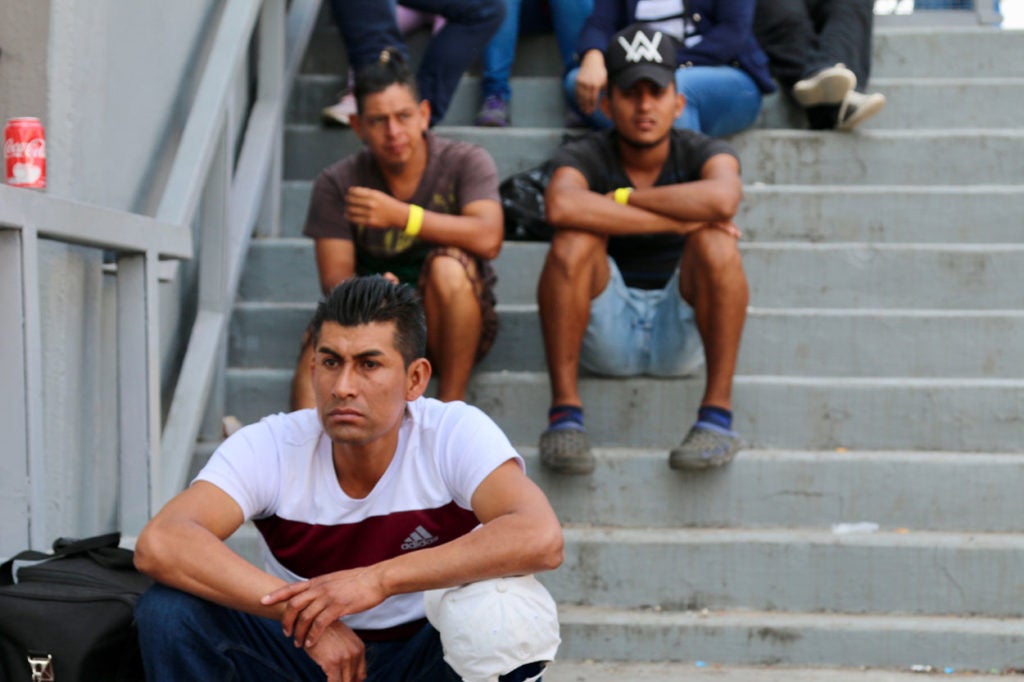
Many of the migrants say they are fleeing extreme violence and poverty in search of economic opportunities in the U.S.
Why They Joined the Caravan
The current caravan is said to have begun when Bartolo Fuentes, a former lawmaker in Honduras, organized a group of about 200 migrants to head north across Mexico.
A news program on the Honduran channel HCH aired a segment on the planned move, adding that all costs would be covered. Fuentes later denied ever making such an offer.
Portillo said he heard about the caravan from the broadcast.
“There’s no work. The crime is barbaric,” Portillo said of Honduras. “That’s why I decided to emigrate, because there’s no work or anything.”
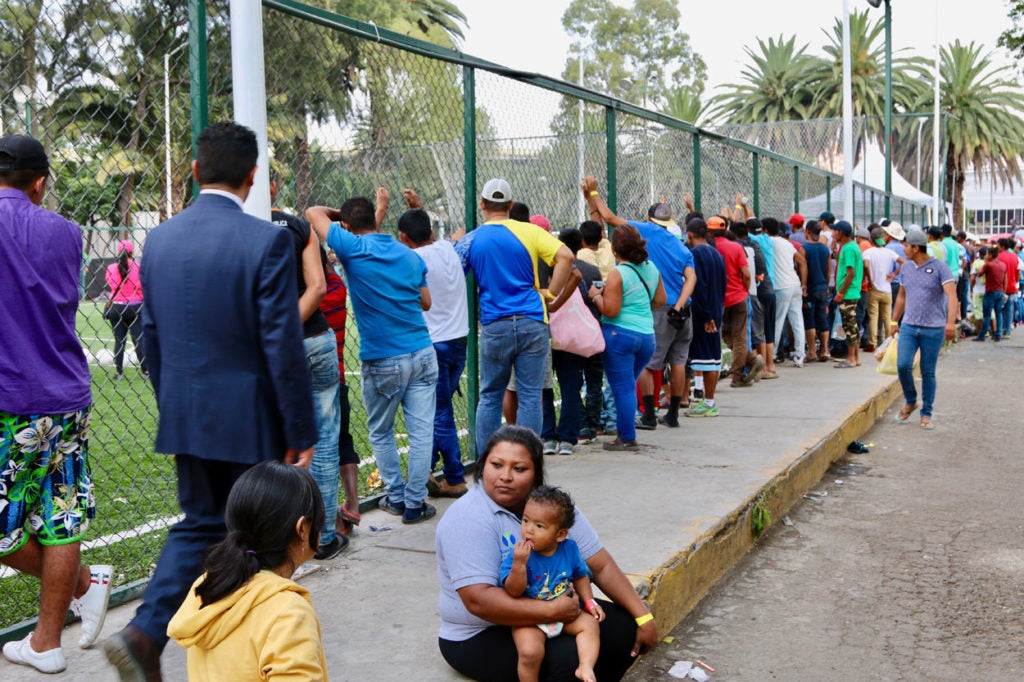
“We simply decided to band together to protect ourselves, because the journey is dangerous,” Wilson Gomez Portillo, 23, says.
Guatemalan police arrested Fuentes and deported him to Honduras. His original plan, though, swelled into a caravan of 7,000.
Central American migrants typically pay human traffickers—“coyotes—about $7,000 to guide them on a treacherous journey to the U.S. border.
“Nobody’s organized us. Nobody’s paid us,” Portillo said. “We simply decided to band together on our own to protect ourselves, because the journey is dangerous.”
“But Honduras is even more dangerous,” he said.
Gabriella, who learned about the caravan from another Honduran news program, said that what ultimately tipped the scale for her was the promise of safety in numbers. That plus not having to pay for a “coyote.”
“It’s smarter to travel in a group, it’s much safer,” Gabriella said. “The people who split off to go faster get hurt.”
On their own, migrants such as Gabriella would face the threat of rape, robbery, kidnapping, and extortion by criminals, gangs, and drug cartels. They often make the journey more perilous than the conditions the migrants flee—especially for those who bring children.
“I’ve seen children suffering. Deaths … yes. Disappearances. People who just disappeared out of nowhere, you know?” Cruz said.
Cruz, who heard of the caravan on HCH, said she decided to travel with a cousin and his wife because of the gang threat. Her children, parents, and siblings stayed at home.
At the encampment in the soccer stadium, Escobar said he left behind his wife and two children; he feared for his life, he said, because of gang violence and government reprisals for his support of opposition movements.
“The police, the army, they wanted to kill us. And they’re still looking for us,” Escobar said while standing in line for lunch, adding, “The gangs kill you, or the common crime, and then there’s the government. Better to find a different nation with better opportunities instead of going back.”
The migrants are not quarantined from the inherent perils.
There are “criminal characters taking advantage of the flow,” the Mexican official said. “Drug traffickers could be looking at this situation to determine new routes.”
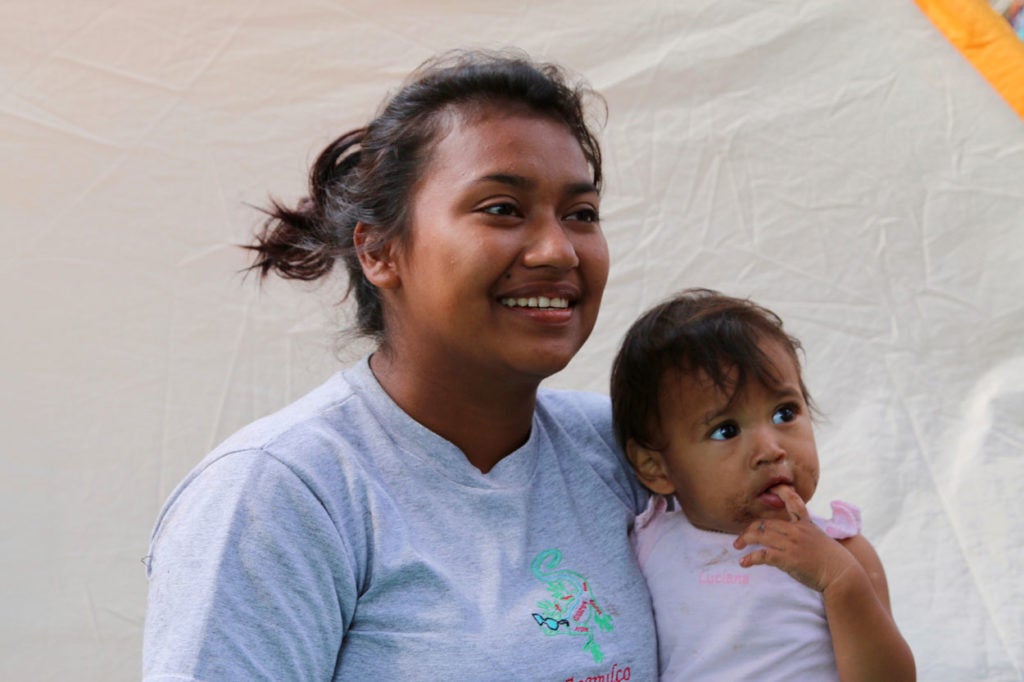
“The people who split off to go faster get hurt,” says Gabriella, 20, traveling from Honduras with daughter Ayesha.
Last week, Mexico’s Oaxaca State Ombudsman Arturo Peimbart announced that about 100 migrants in the caravan, including children, had been kidnapped and likely handed over to the Los Zetas drug cartel, Mexican agencies reported.
“All along the journey we’ve seen and heard and fought against crimes like the ones we’re escaping from,” said Silvero Flores, 47, from Honduras. “Even some of the women have been raped. We’ve seen them. Men too, beaten, abused. It’s been a fight. We’ve come fighting.”
Larger Caravans as New Normal
Caravans of migrants from Central America that traverse Mexico en route to the U.S. are nothing new. Yet, Mohar explained, each typically included fewer than 100 migrants.
Mohar, who now runs Grupo Atalaya, a private consultancy specializing in strategic risk analysis and intelligence, was Mexico’s chief negotiator for migration affairs during the administration of then-President Vicente Fox.
Asked if the current wave of caravans is a bellwether for things to come, Mohar replied without pause, “I’m afraid so.”
“America needs to have a long-term view on this issue,” he said. “It can easily become caravans of 20,000 people if we’re not careful.”
Mohar’s assessment echoes other U.S. and Mexican officials and experts.
“Together with loopholes in our laws, much larger and regular caravans could become normal if we do not make important policy changes to deter and stop illegal immigration,” Heritage’s Inserra said.
“It is just natural for folks in search of a better life to join such a caravan with the promise of safety, not needing to pay a coyote, and hopefully gain entrance to the U.S.,” Inserra said.

